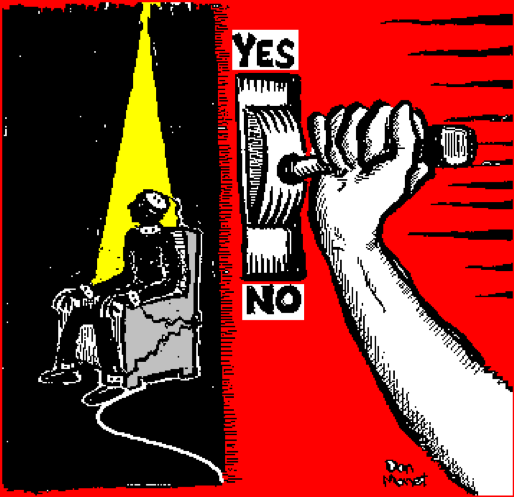Above: Views on the death sentence are anything but static, and most reasoning refers to moral rights and spending.
The United States government spends billions of dollars annually to feed, house and clothe over two million of its citizens. No, these citizens aren’t homeless veterans or disabled, but those who have broken the laws of our nation: convicted criminals.
For as long as law codes existed, people have been put to death for heinous acts such as murder or theft. However, as society modernizes and liberalizes, there is a growing stigma against the death penalty in the United States as some sort of barbaric, animalistic practice.
However, the economic benefits of using the death penalty are profound. The Vera Institute of Justice released a study of forty states in 2012 that shows the average annual cost per inmate in these forty states was the outrageous amount of $31,286.
This average was higher than the annual cost per student in public school. According to the National Center for Education Statistics, the national average for this expense was $12,296 in 2012. This means that the federal government spends more money on our nation’s criminals than on the education of our nation’s youth. Instead of
A study done by The Sentencing Project in 2012 shows a 22% rise in the number of prisoners sentenced to life in prison without parole. Since 1984 the number of those who serve life sentences more than quadrupled despite a steady decline in crime rates.
In 2012, more than 159,000 people were serving life sentences, and 50,000 of those were serving life sentences without the possibility of parole. That means the US government spends $4,974,474,000 annually on felons who will live the rest of their lives in prisons, $1,564,200,000 of which is spent on those who have no chance of parole. That’s about one third of Donald Trump’s net worth.
The death penalty is the solution to the financial problems that the life sentence presents. There is no reason why convicted murderers and rapists should be fed and housed for the rest of their lives by the federal government. Instead, sentencing them to the death penalty would bring swift justice and bring a swift end to the government’s financial responsibility.
The death penalty should be enforced and broadened to all prisoners who receive life sentences without parole. It doesn’t make sense to keep these people alive when it costs so much, and the money the government wastes on these prisoners would be better spent on anything else.
While some problems exist with the modern death penalty, the idea behind it stands; deplorable criminals’ welfare should not be provided for by the federal government.






























